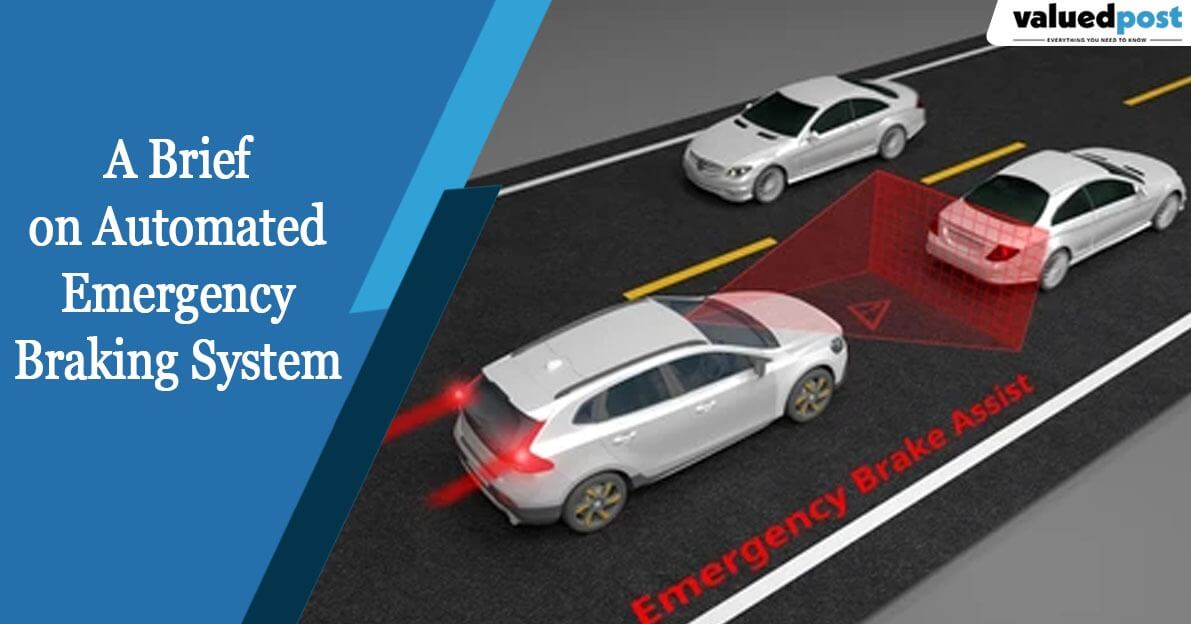In today’s world, in addition to conforming to the fundamental functionality of moving people, automobiles are also responsible for safeguarding the safety of occupants in the event of an emergency. The emergence of modern technology, such as ADAS (advanced driver assist systems), has dramatically changed the vehicle safety system market. When a collision is unavoidable, the automatic emergency braking system uses electronic stability control (ESC) and advanced driver assistance systems (ADAS) to slow the car and decrease the impact’s severity.
As a result, the automated emergency braking system is a valuable feature in high-speed circumstances. A forward-collision warning system and an automatic emergency braking system are optimised together for effective functionality. The automated emergency braking system does not claim to avoid a collision totally but minimises the impact’s severity.
Working of Automated Emergency Braking System
Radar sensors and cameras were first implemented to enable the Adaptive Cruise Control feature; later on, AEB also utilises the same equipment. A radar sensor network on the front grille, bumpers, or windshield power the AEB driver assistance system. You can find cameras also in some scenarios, and some modern systems combine radar sensors with cameras.
Look through the following points to learn more about how the automated emergency braking system works-
- The sensors and cameras in your car continuously measure the distance between your automobile and the object in front of you.
- If the gap between the vehicles closes quickly, the system issues a warning.
- If you are too late to respond, the AEB kicks in and applies the brakes automatically.
- The ECU (Electronic Control Unit) monitors your input and may detect when you take your foot off the accelerator and manually apply the brakes. As a result, AEB will not activate unnecessarily.
- The Anti-Lock Braking System (ABS) assists AEB in effectively stopping or slowing down the vehicle. The more sophisticated automatic braking systems work across a more comprehensive speed range. Hence, they mitigate the intensity of a high-speed collision.
What are the advantages of having AEBS?
- One of the essential benefits of AEB is that it can prevent an accident.
- If you’re travelling on the highway, the system can significantly reduce your vehicle’s speed before colliding with an object.
- It is an effective safety feature as AEB’s quick reaction can save from life-threatening risks.
- If you don’t use the brakes hard enough, AEB can increase the braking force.
- If visibility is poor, an autonomous emergency braking system comes in handy.
What are the disadvantages of having AEBS?
- It is an expensive system.
- Some drivers may be overly reliant on AEB and fail to pay attention to the road ahead, for example, if parking in a tight location.
- Automatic braking may engage inadvertently, jamming the brakes.
Global Market Growth Perspective for Automated Emergency Braking System
The market for automotive automated emergency braking systems will remain lucrative over the next ten years as regulatory authorities and automobile manufacturers worldwide try to equip vehicles with cutting-edge technology to increase the safety of occupants and other road users.
According to industry experts, automatic emergency braking will soon be a standard feature in many forthcoming vehicles. Furthermore, driverless cars, which are forecasted to be commercialised in the near future, will need to include such a feature to reduce rear-end collisions.
From a macroeconomic standpoint, it can be assumed that the automatic emergency braking system market will increase significantly due to rising vehicle production and sales and shifting consumer preferences for improved safety features.
Some of the market participants in the global market for automatic emergency braking systems include:
- ZF TRW
- DENSO Corporation
- Mobileye NV
- Continental AG
- Autoliv Inc.
- Tesla Motors
- Delphi Automotive Plc.
- Magna International Inc.
- Robert Bosch GmbH
The extent of safety afforded by autonomous emergency braking systems has been a topic of contention in the market. Is it feasible to avoid collisions by braking without the assistance of humans? Furthermore, the absence of motivation for road management organisations and automakers to adopt autonomous emergency braking systems block their deployment on roads.















